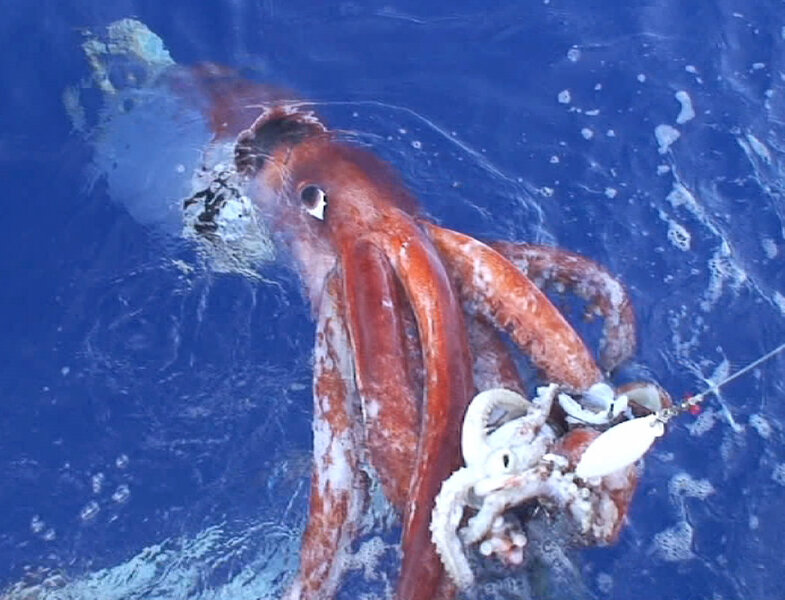The Kraken appeareth: Giant squid filmed on Christmas Eve
Loading...
Fishermen in Japan's Toyama Bay were startled Christmas Eve to spot a 12-foot giant squid gliding about their marina for several hours, while local divers managed to capture the cephalopod on video.
Mizuhashi Fisherina manager Tatsuya Wakasugi told the Japan Times he was surprised to see a living squid: although squid sightings aren't uncommon in the area, fishermen usually find dead ones tangled up in their nets as their colors fade.
"Maybe it was a Christmas present," he told reporter Shusuke Murai.
The first footage of a live giant squid, or Architeuthis dux, was captured in 2012, making the Toyama divers' video an early gift for scientists and squid enthusiasts around the world. Given centuries of folklore about the creature rumored to take down whole ships and wrestle battle-scarred sperm whales, that's a larger audience than most species could muster.
The ocean behemoths, stretching up to 40 feet long, tend to stay 2,000 to 3,000 feet below the surface, which is part of why legend, rather than science, informs the better part of squid lore. In the 1800s, poet Alfred Lord Tennyson imagined "The Kraken" enjoying "his ancient, dreamless, uninvaded sleep" out of the reach of sailors or whalers — who usually preferred it that way, given tales of a violent sea monster that disguised itself as an alluring island before gobbling up their boats.
Squids' preference for the deep sea made the Toyama sighting a surprise. Cameramen accompanied divers as they swam with the squid and guided it out of the shallow harbor. The video was first reported by Japan's ANN network.
"My curiosity was way bigger than [my] fear, so I jumped into the water and [got] close to it," diving shop owner Akinobu Kimura told CNN. He reported that the squid "looked lively, spurting ink and trying to entangle his tentacles around me," although some worried that it appeared injured.
The first photographs of the species were made in 2004, but it wasn't until 2012 that a team managed to film live squid using a new, quieter camera set-up designed by Edith Widder to imitate the luminescence that jellyfish give off when they're being attacked. Squids don't eat jellyfish themselves, but are attracted to a bigger prize: whatever attacked the jellyfish in the first place.
And this spring, Japanese researchers caught baby squid for the first time, giving valuable clues about topics they know little about, from squid reproduction to travel: the babies were found in groups, but adult giants live alone.
One recent discovery: giant squids are remarkably homogeneous. In fact, their genetic diversity may be the second-lowest of all ocean creatures. And scientists have managed to debunk the theory that giant squids attack whales, a sight reported by Moby Dick-era sailors: although squids can give whales a good wallop, sperm whales are one of their only predators.
They're pretty harmless toward humans, at least, as illustrated by the Toyama videos. And when they do eat, their beaks take "very small, delicate bites," as Dr. Widder told the BBC. But that could be cold comfort for their prey. As their biological name indicates, it's smaller sea creatures, including squids, who need to watch out for Architeuthis dux, the 'leader,' or 'duke,' of squids.








